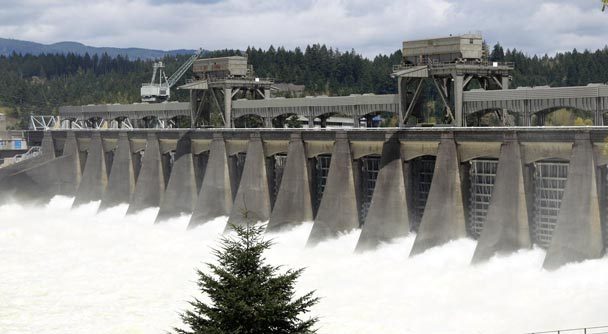forum
library
tutorial
contact

Judge's Salmon Spill Program Won't Work
by John McKernWalla Walla Union-Bulletin, December 11, 2017
|
the film forum library tutorial contact |

|
Judge's Salmon Spill Program Won't Workby John McKernWalla Walla Union-Bulletin, December 11, 2017 |
 I don't often agree with U.S. Rep. Cathy McMorris Rodgers, and her reasons behind wanting to end the litigation over the Lower Snake River dams might differ from mine.
I don't often agree with U.S. Rep. Cathy McMorris Rodgers, and her reasons behind wanting to end the litigation over the Lower Snake River dams might differ from mine.
First, the lawsuit has been frivolous for years based on a lie told often enough to be believed as the truth. The lie is that the Lower Snake River dams caused and are continuing to cause the decline of Snake River salmon runs. That, according to the facts, is not true.
Historic overfishing and habitat loss reduced salmon returns to the Columbia River by 97 percent by the year Bonneville Dam provided the first actual counts of salmon going upstream to spawn. From a historic 16 million, less than half a million salmon were counted over Bonneville Dam in 1938 and again in 1939.
In the Snake River, access to spawning grounds was lost to Brownlee Dam (1959) and Lewiston Dam (1917) and other upstream dams before the Lower Snake River dams were constructed (1962 to 1975).
The Lower Snake River dams were constructed with fish passage facilities that were thoroughly studied and improved over the past five decades. Adult survival past each dam exceeds 99.5 percent and juvenile survival is over 95 percent per dam.
Contrary to the opinion of environ-
mentalists and United States District Judge Michael Simon, spill is not the safest way to get juvenile salmon downstream. Since 1981, juvenile salmon have been collected at Lower Snake River dams and transported by trucks and barges around downstream dams and released below Bonneville Dam with 98 percent survival.
In-river survival has ranged from less than 10 percent to a high in recent years of 65 percent.
The highest adult Chinook returns to the Snake River since 1962 occurred in 2001 (spring run), 2015 (summer run) and 2013 (fall run), all after the Lower Snake River dams were in operation.
The highest redd counts (spawning nests) for wild plus hatchery spring/summer Chinook occurred in 2011 (6,100). Wild only spring Chinook redds peaked in 2015 at 4,100. Fall Chinook spawning in the Clearwater River and Hells Canyon have increased dramatically, and Idahoans enjoyed catch limits of six hatchery adults and unlimited fall Chinook jacks again this year.
Simon's spill program does not increase juvenile salmon survival as purported in the hoax. For the reasons stated above, the lawsuit should stop, and focus should be on increasing survival in other salmon habitat areas.
Related Pages:
Judge's Salmon Spill Program Won't Work by John McKern, Walla Walla Union-Bulletin, 10/18/17
View from Idaho on Dam Protection by John McKern, Walla Walla Union-Bulletin, 8/1/17
Yes, Consider All Facts on Dam Breaching by John McKern, Walla Walla Union-Bulletin, 6/30/17
McKern Letter: Salmon Runs by John McKern, Idaho Statesman, 1/2/16
Adult Salmon Survival Past Dams is 99 Percent by John McKern, Walla Walla Union-Bulletin, 3/25/15
Hydropower Not Been Replaced by Wind Power by John McKern, Walla Walla Union-Bulletin, 3/6/15
Environmentalists Try to Muddy Waters About Dredging by John McKern, Walla Walla Union-Bulletin, 12/30/14
Talk of Breaching Snake River Dams a Red Herring by John McKern, Walla Walla Union-Bulletin, 3/21/14
Blaming Dams for Fish Loss is a Hoax by John McKern, Walla Walla Union-Bulletin, 8/23/13
Judge Redden's Replacement Can't Be Worse by John McKern, Walla Walla Union Bulletin, 12/5/11
Science Does Not Support Dam Breaching by John McKern, Walla Walla Union Bulletin, 12/19/11
learn more on topics covered in the film
see the video
read the script
learn the songs
discussion forum
